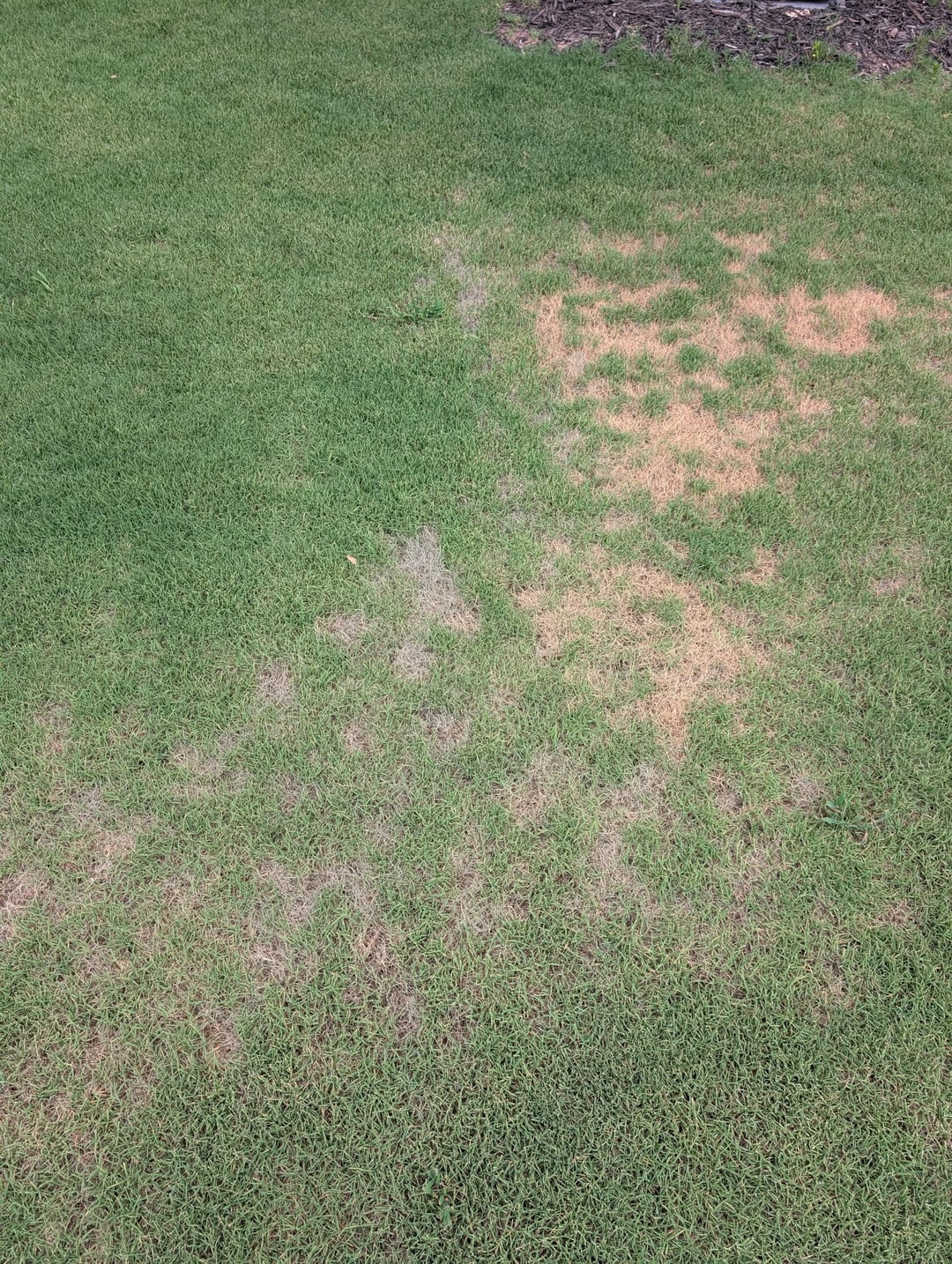
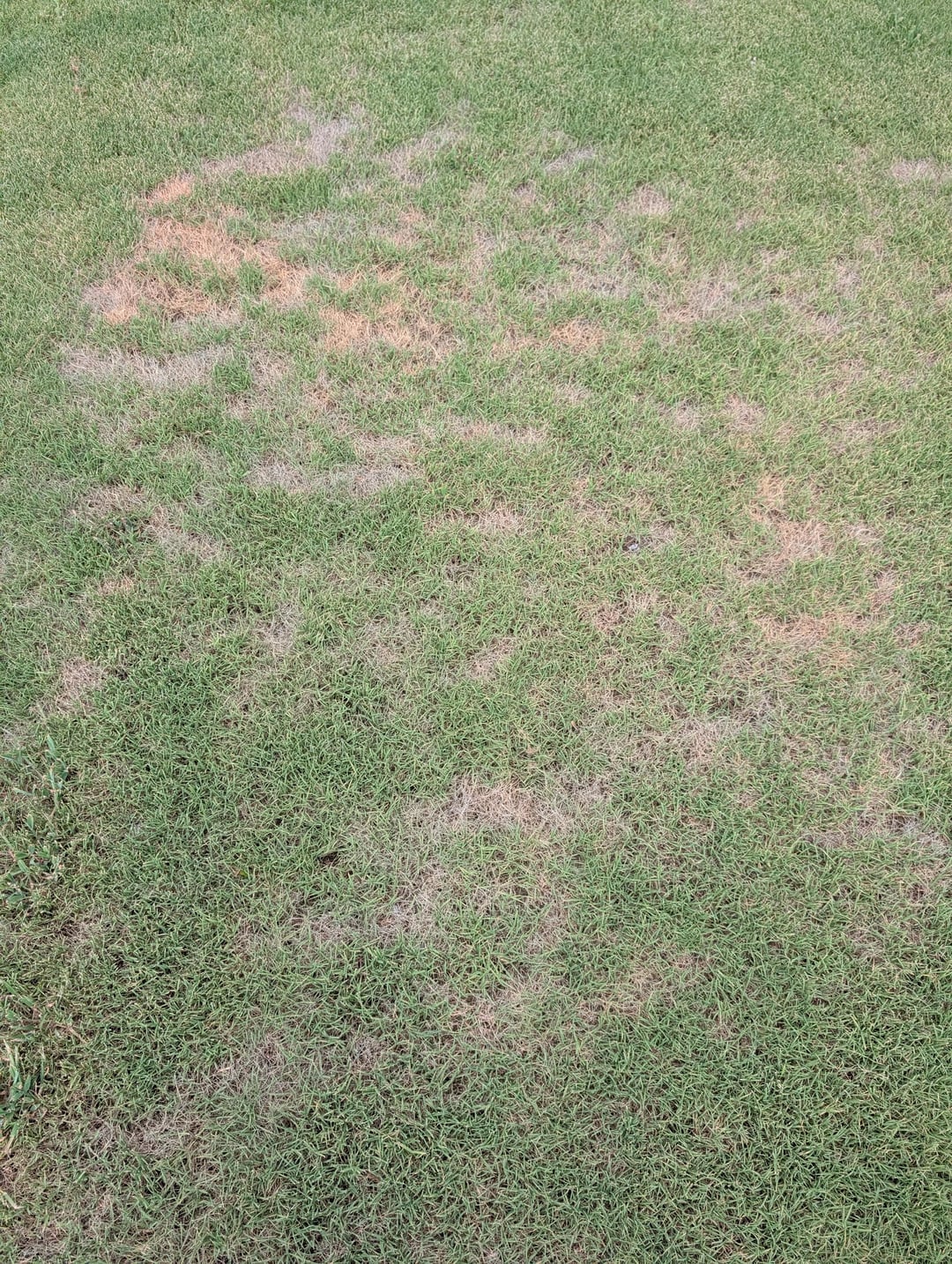
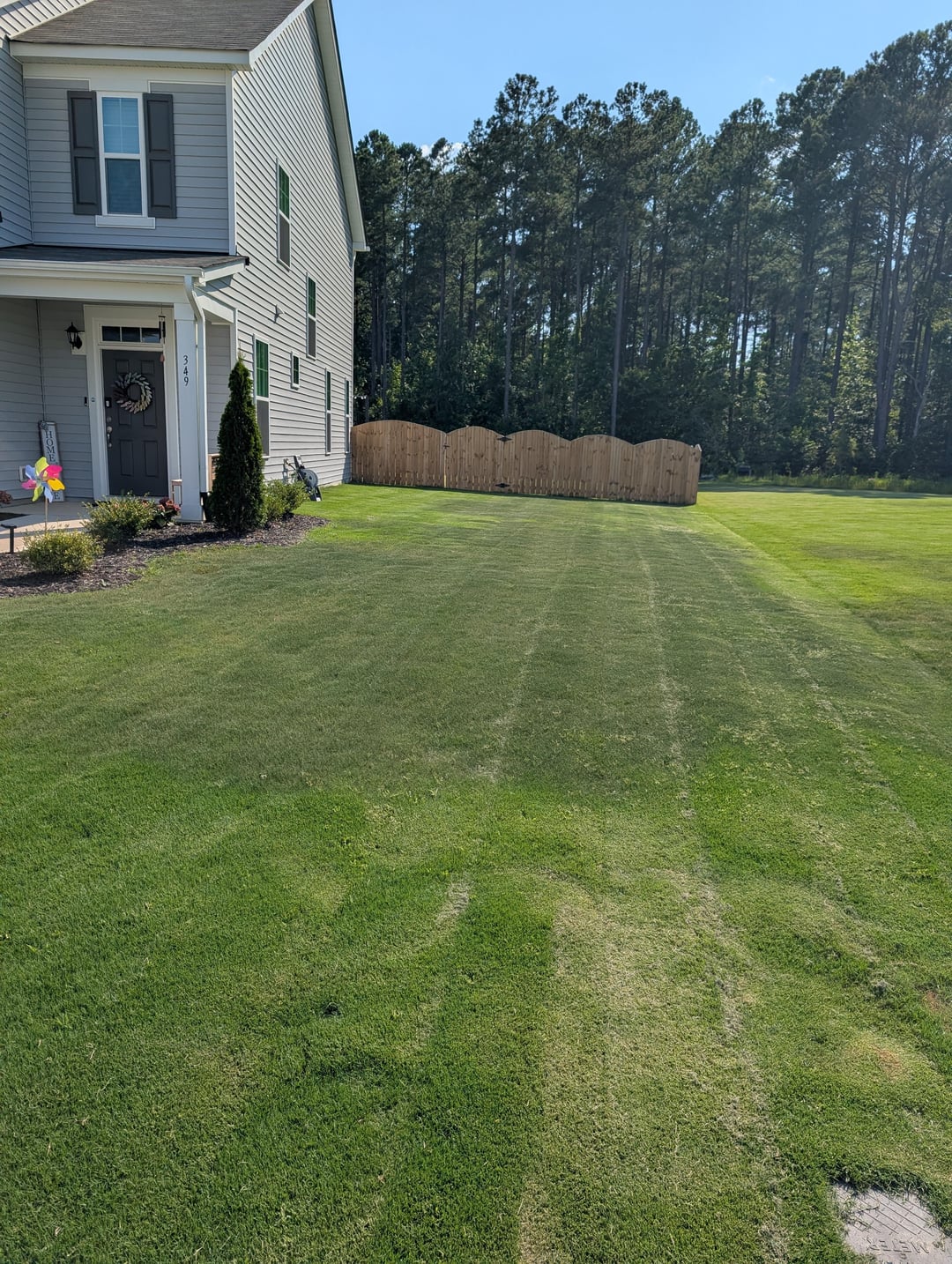

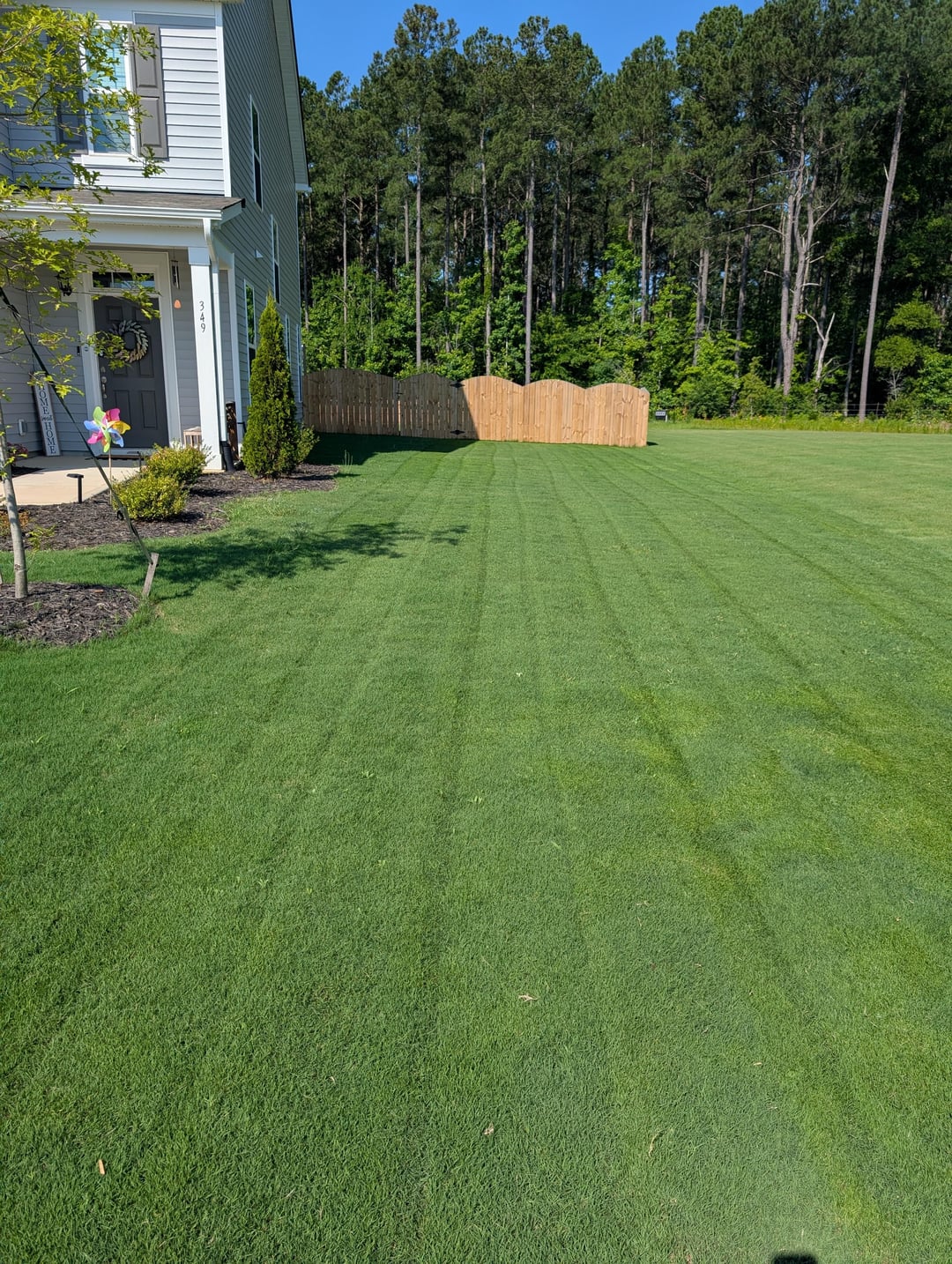
I posted literally Sunday and got 1300+ up votes on my lawn.. I was riding a high from my great green lawn.. fast forward to today. It's turning to shit😔 can anyone tell me what possibly I did wrong? Neighbors yard is doing something similar. We assume it's from the heat, it's been 95+ everyday for the last 4 days and will be 95+ for the next week I believe. My grass is turning like gray in patches before turning yellow/brown. Any advice would be awesome. I am watering for almost an hour to 2 hours a night as well for context.
by dcboy23

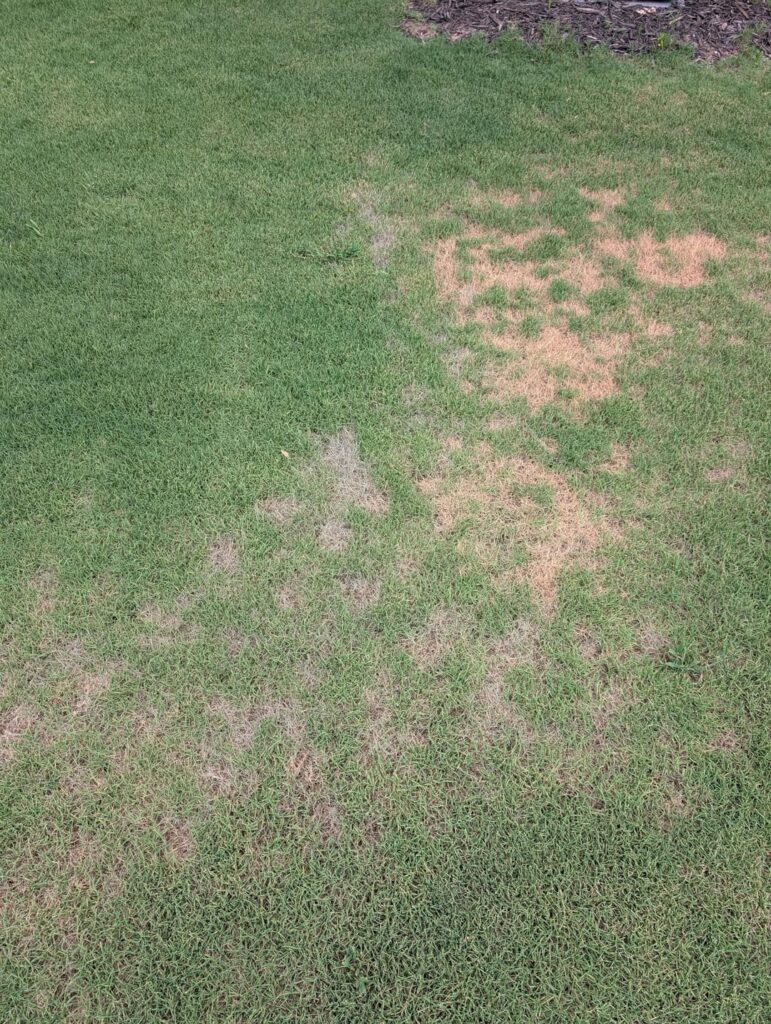
25 Comments
Watering at night, high heat, and high humidity (presumably)? Gonna guess fungus.
Lawn care is a game of runs lol
That dark hue in the 3rd pic looks like wilting from afar. When turf wilts, the sides of each leaf curl inwards forming skinny looking straws of grass. Take a closer look.
Fungus. I have it too
From what I understand, don’t water at night.
It allows too much moisture to sit on the blades without drying, which invites fungus.
Better to water early morning, so it has time to soak into the soil, allowing the surface to dry through the day.
Bermuda? Location? Did it come on super quick?
1. NEVER WATER AT Night! Watering should always be done early morning, once a week deeply is all that’s needed most of the time. Watering at night promotes fungus and disease.
2 Have you fertilized lately? If it’s that hot, it is way too late in the season to be fertilizing, puts too much stress on the lawn.
Why are you watering at night? How many times a week are you watering?!
It’s fungus. My lawn looks just like yours. It rained for a whole week last week I believe.
It looks like it’s cut pretty short. I’ve held off mowing mine during this heatwave in the Northeast. As the summer gets hotter and hotter, I tend to incrementally raise the mower deck.
The gray/haziness (pic 3) almost looks like heat stress. I get some “hot spots” like that when we have a run of super hot weather with little/no precipitation. Photos 1, 2 &4 definitely look fungus-y
What i did to fix mine is scotts disease ex, hydretrain, some iron and put some tuna can for precise watering.
Fungus and overwatering. Guessing the root zone is over saturated and suffocating the grass roots.
Deeply water 2-3 times a week between 4-8am so that you get 1-1.5” of water down. If you haven’t yet, do a tuna can test so you know exactly how long it takes to put down half an inch. You can also do a light sprinkle around 1-2p, just enough to wet the blades but not pool on the soil. This will cool it down and prevent it from “sweating” out its own water.
No more water at night. Water in the morning around 6:00. I do 5:00 myself but I have seven zones that run between 15-25 minutes. Get something to treat the fungus. Allow your grass to grow longer and cut it higher.
Grubs?
So a lot of people have said fungus, and that’s not unlikely if you water at night frequently or have gotten a lot of rain recently for days on end (like I have here in NC)
But that 3rd pic looks a lot like heat stress/drought stress. Even if you’ve been getting a lot of rain recently, depending on your soil composition that may not account for anything at all.
My soil quality here is pretty poor, after 2-3 days of hot & dry weather my grass starts getting thirsty and drought stressed. And usually after a bought of drought stress, sometimes I’ll get some yellowing/browning before the grass will bounce back. That *could* be the case here.
All that being said, applying fungicide will not hurt your yard. Apply the curative rate, not preventative. You should be good to go.
Ayyy welcome to the club lol my lawn became a pampered little baby with the rain every other day basically. Now it’s had no water for 5 days and it’s been 90+, and immediately gave up. I’ll throw down something for fungus and hope for the best
Fungus, I’m living your pain right now too!
Possibly grubs. They eat grass roots
Dang dude I remember your post
Agh, my lawn, brother! I’m in North Alabama and have the same hybrid Bermuda grass you have I believe. I think you have both fungus and heat stress.
Look into getting a Rachio controller for your irrigation. It basically cycles through watering for a short time, then shuts off, turns on again, and so on. This really helps you not waste water and ensures that the soil is watered deep into your root zone. It eliminates the guesswork, and I highly recommend buying one.
Also, please stop watering your lawn at night. It’s a recipe for disaster. Hot, humid air combined with wet grass every night is a recipe for fungus growth. The Rachio controller can also help with this issue.
Lastly, I’d love to know what your fertilizer, fungus, pest control schedule is, etc.. I’m happy
2 hours? *Every* day? And ***at night***?
Yikes, bro. All that is likely causing your issue here (aka: fungus).
You shouldn’t be watering daily, or at night. You should water 2-3 times a week, early morning. You’ve created a fungus issue for yourself, along with encouraging shallow roots. You should treat it with a fungicide. Azoxystrobin and propiconazole are my go tos, that is rotate every 14-21 days. Azprop or Azoxy Prop SE have both in it, if you really want to make sure you’re hitting a wider range of funguses if you can’t identify it. Here’s a good fungicide guide for future reference https://www.thelawnforum.com/threads/fungicide-guide-cool-season-focus.4042/
Just treat with fungicide and spot treat with fertilizer it’ll grow out of it
Had something similar…
Was not just fungus! It was chinch bugs too. They are tiny, tiny, tiny, and come out of the thatch to suck the blades when it is too dry. High heat can cause the dead spots (or fungus can) and then the chinch bugs spread. They are most likely in the hottest areas of your lawn, such as by sidewalks or driveway.
Wet and cool spring led to fungus, which led to dry spots, which led to chinch bugs.
I did spray fungicide and insecticide on opposite weeks to make progress. Fungicide alone did not do the trick, telling me there was something else. Looked VERY close. Little things look like fleas.
Fungus btw is much more common in spring and fall (unless you’ve been watering the snot out of it…or at night)